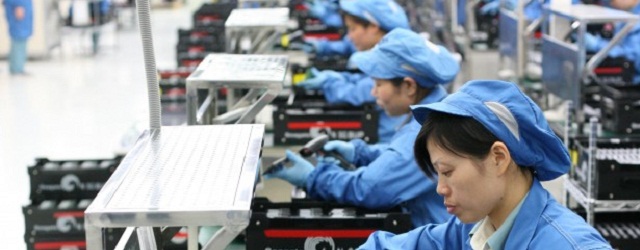
China took Davos’ Economic Forum as an opportunity to tell the world not to panic about the prospects of Chinese economy. The Head of the National Economic Research Institute took the lead when saying that “the soft landing finally happened last year and now the economy is improving”. But with this statement he somehow missed a point that should worry China the most: what will happen to the economy in the long term. China’s economic miracle was possible thanks to three decades of cheap manufacturing and exports. Thousands of workers left their villages to become the cheap labour force of China’s southern cities. Now this is a thing of the past. Factories are experiencing a labour shortage that is causing an increase in wages and consequently a loss of the country’s competitive edge.
The reason why this is happening is that the country is about to reach the Lewis Turning Point, as the work of two IMF’s economists, Mitali Das and Papa N’Diaye, warned. This mathematical model of development marks the point where a country’s rural population cease to be a source of cheap labour force for the manufacturing sector. When this happens, the industrial sector suffers an increase in wages, resulting in a loss of competitiveness and, therefore, causing a massive slowdown. According to the two IMF’s economists, China will reach the Lewis Turning Point any time between the years 2020 and 2025. Nowadays, a 47% of the population lives in rural areas, but these workers are seeing how the prospects of finding a job in their native villages within the agricultural or services sectors is increasing dramatically. For them it doesn’t makes sense anymore to emigrate to the coastal industrialised cities, if they can find similar wages at home.
In this context, the new trend will likely put an end to the outsourcing of manufacturing. Apple, for instance, already started manufacturing its Imacs in the United States. Whereas General Electric moved from Canton to Kentucky a great part of their production. The main cause behind this insourcing is that China is seeing an annual increase of the manufacturing work force wages of a 20%.
Trying to be realistic, China’s leading exporting provinces reduced to a half their growth goals for this year. They were used to figures such a 10% but for 2013 they don’t expect to grow beyond the 5%, according to information released by main Chinese media agencies. Future will tell how these provinces will rethink their modus vivendi. Much needed economic reform might help in some fields. But if reforms were finally embraced, it would take many years before the give some fruits. Meanwhile, the global economy’s bad health will keep on jeopardizing the basis of the current Chinese model.






Be the first to comment on "China needs more than just exports"